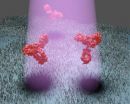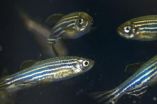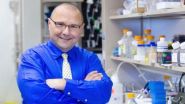(Press-News.org) JACKSONVILLE, Fla., Sept. 12, 2014 — The liver transplant team at Mayo Clinic in Florida has found, based on 12 years of experience, that more than half of patients receiving a new liver can be "fast-tracked" to return to a surgical ward room following their transplant, bypassing a one- or two-day stay in the Intensive Care Unit (ICU).
In the September issue of the American Journal of Transplantation, the physicians and researchers have turned their knowledge of who can be safely fast-tracked into a scoring system that other transplant centers can also use — thus sparing patients potentially overly aggressive treatment and saving substantial health care dollars.
Mayo Clinic in Florida consistently ranks in the top three nationwide in number of liver transplants performed. It is the only center that does not routinely send all transplant patients to the ICU.
"To the best of my knowledge, our program has been the only liver transplant program in the United States, and perhaps in the world, with this unique fast-track patient care model consistently practiced," says the study's senior investigator, C. Burçin Taner, M.D., chair of Transplant Surgery at Mayo Clinic, Florida.
"We have been fast-tracking patients after liver transplantation for more than a decade, and our experience has demonstrated that a subset of patients can bypass the ICU after liver transplantation," he says.
There are distinct advantages in avoiding the ICU when safely possible, Dr. Taner says.
"Keeping a patient on ventilation in the ICU increases the risk of infection, and other complications can arise. Many more tests, such as routine X-rays, are ordered in the ICU, compared to post-transplant care in the surgical ward. So less intensive patient care can be done in those patients who do not need it," he says.
"And avoiding the very expensive care in the ICU helps the patient as well as the health care system. For each patient thousands of dollars can be saved when bypassing the ICU entirely."
When the Mayo Clinic transplant center in Florida began fast-tracking patients in 2002, the clinical decision for each patient was based on assessments made by attending transplant surgeons and anesthesiologists at the time of the liver transplant operation.
To determine the objective variables that mirror such a subjective, although expert, decision, a team of physicians and researchers at Mayo examined 1,296 liver transplant patients treated at the center between 2002 and 2010. They found that 704 patients (54.3 percent) were successfully fast-tracked, meaning that they were sent to their rooms after approximately two hours spent in the post-anesthesia care unit (PACU), where anesthesia was withdrawn and patients were awoken. In contrast, only 592 (45.7 percent) went to the ICU after briefly staying in PACU.
The nine objective variables that determined patients who bypassed ICU were: being male, of younger age, lower body weight, having a first transplant, a shorter operative time, no time spent in the hospital before transplant, lower MELD score (a biological marker that indicates a patient's sickness), a lower use of blood transfusions, and little use of medication to increase blood pressure.
Patients who were fast-tracked had better survival compared to patients sent to the ICU. Eight years after transplant, 74 percent of fast-track patients were alive, compared to 65 percent of patients sent to the ICU.
"Patients who receive a liver transplant have end-stage liver disease and are all very sick, so it is very important that we provide the highest quality care," Dr. Taner says. "With detailed analysis of our fast-track practice, we demonstrate that we can tailor the appropriate care according to the individual patient's medical needs.
"In the era of cost-containment, with this tailored approach we can have more control of resource utilization without sacrificing quality of care. Both individual patients and the health care system overall benefit from this approach," he says.
The study was funded by Mayo Clinic, Clinical Research Subcommittee.
INFORMATION:
About Transplantation at Mayo Clinic
Mayo Clinic has one of the nation's largest and most experienced transplant practices, with campuses in Minnesota, Arizona and Florida. Over 200 doctors in transplant medicine and surgery perform about 1,800 transplants a year, and have a long track record of excellent outcomes. The opportunity to collaborate with multiple transplant programs allows Mayo Clinic patients access to a multidisciplinary transplant team and the opportunity for multi-organ transplantation if necessary.
About Mayo Clinic
Recognizing 150 years of serving humanity in 2014, Mayo Clinic is a nonprofit worldwide leader in medical care, research and education for people from all walks of life. For more information, visit 150years.mayoclinic.org, MayoClinic.org or newsnetwork.mayoclinic.org/.
Media Contact
Paul Scotti
Mayo Clinic Public Affairs
904-953-0199
Email: scotti.paul@mayo.edu
Mayo finds many liver transplant patients can avoid costly stay in ICU after surgery
2014-09-15
ELSE PRESS RELEASES FROM THIS DATE:
The shadow of a disease
2014-09-15
This news release is available in German.
In future, some diseases might be diagnosed earlier and treated more effectively. Researchers at the Max Planck Institute for the Science of Light in Erlangen have developed an optical method that makes individual proteins, such as the proteins characteristic of some cancers, visible. Other methods that achieve this only work if the target biomolecules have first been labelled with fluorescent tags; In general, however, that approach is difficult or even impossible. By contrast, with their method, coined iSCAT, the researchers ...
Unemployment for doctoral scientists and engineers below national average in 2013
2014-09-15
A new National Science Foundation (NSF) report says the 2013 unemployment rate for individuals with research doctoral degrees in science, engineering and health (SEH) fields was one-third the rate for the general population aged 25 and older--2.1 percent versus 6.3 percent.
According to the report, an estimated 837,900 individuals in the United States held SEH research doctoral degrees in 2013, and nearly 735,900 of them were in the labor force; this includes those employed full time or part time and unemployed individuals actively seeking work.
Statistics show that ...
USC researchers discover the healing power of 'rib-tickling'
2014-09-15
Unlike salamanders, mammals can't regenerate lost limbs, but they can repair large sections of their ribs.
In a new study in the Journal of Bone and Mineral Research, a team directed by USC Stem Cell researcher Francesca Mariani takes a closer look at rib regeneration in both humans and mice.
The first author of the paper, USC medical student Marissa K. Srour, was a USC undergraduate when she started the project, which earned a 2011 USC Discovery Scholar Prize. Each year, 10 graduating seniors win these coveted prizes, which recognize exceptional new scholarship.
Using ...
Zebrafish model of a learning and memory disorder shows better treatment
2014-09-15
PHILADELPHIA — Using a zebrafish model of a human genetic disease called neurofibromatosis (NF1), a team from the Perelman School of Medicine at the University of Pennsylvania has found that the learning and memory components of the disorder are distinct features that will likely need different treatment approaches. They published their results this month in Cell Reports.
NF1 is one of the most common inherited neurological disorders, affecting about one in 3,000 people. It is characterized by tumors, attention deficits, and learning problems. Most people with NF1 have ...
Advancing the science for health programming in crisis conditions
2014-09-15
September 12, 2014 -- Humanitarian crises are becoming increasingly complex and a growing threat to the health and safety of populations. An improved evidence-base to guide interventions in the countries most vulnerable to these conditions is more critical than ever. A paper by researchers at Columbia University's Mailman School of Public Health published online in the journal Science, looks at the challenges of doing research in such settings and the strategies that must be adopted for scientific advance.
"The circumstances of humanitarian crises present many barriers ...
Decoding 'sweet codes' that determine protein fates
2014-09-15
VIDEO:
Here are movies of dynamic behavior of a sugar chain on the basis of NMR-validated simulations. This chain has a particular sugar (green circle).
Click here for more information.
We often experience difficulties in identifying the accurate shape of dynamic and fluctuating objects. This is especially the case in the nanoscale world of biomolecules. The research group lead by Professor Koichi Kato of the Institute for Molecular Science, National Institutes of Natural Sciences ...
You don't walk alone
2014-09-15
65 million people around the world today suffer from epilepsy, a condition of the brain that may trigger an uncontrollable seizure at any time, often for no known reason. A seizure is a disruption of the electrical communication between neurons, and someone is said to have epilepsy if they experience two or more unprovoked seizures separated by at least 24 hours.
Epilepsy is the most common chronic disease in pediatric neurology, with about 0.5% of children developing epilepsy during their lifetime. A further 30% of epileptic children develop refractory ...
Walking or cycling to work improves wellbeing, University of East Anglia researchers find
2014-09-15
Walking or cycling to work is better for people's mental health than driving to work, according to new research by health economists at the University of East Anglia and the Centre for Diet and Activity Research (CEDAR).
A report published today reveals that people who stopped driving and started walking or cycling to work benefited from improved wellbeing. In particular, active commuters felt better able to concentrate and were less under strain than if they travelled by car.
These benefits come on top of the physical health benefits of walking and cycling that are ...
Nature: New drug blocks gene driving cancer growth
2014-09-15
When active, the protein called Ral can drive tumor growth and metastasis in several human cancers including pancreatic, prostate, lung, colon and bladder. Unfortunately, drugs that block its activity are not available. A study published today in the journal Nature uses a novel approach to target the activation of these Ral proteins: "When you want to keep an alligator from biting you, you can tie its mouth shut. We took another approach – we put a stick in its mouth to hold it open," says Dan Theodorescu, MD, PhD, professor of Urology and Pharmacology, director of the ...
Blood-cleansing biospleen device developed for sepsis therapy
2014-09-15
Things can go downhill fast when a patient has sepsis, a life-threatening condition in which bacteria or fungi multiply in a patient's blood -- often too fast for antibiotics to help. A new device inspired by the human spleen and developed by a team at Harvard's Wyss Institute for Biologically Inspired Engineering may radically transform the way doctors treat sepsis.
"Even with the best current treatments, sepsis patients are dying in intensive care units at least 30 percent of the time," said Mike Super, Ph.D., Senior Staff Scientist at the Wyss Institute. "We need ...





